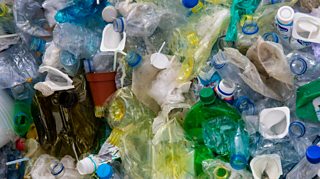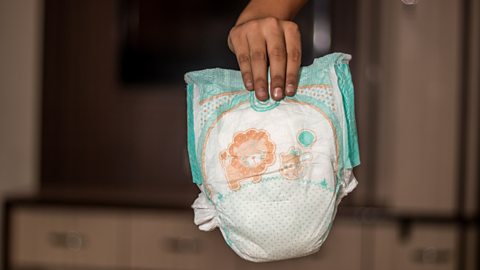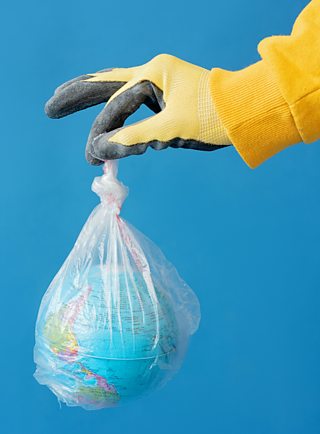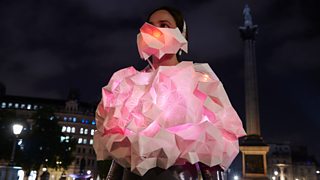The incredible rise and remarkable fall of plastic
The extraordinary story of how plastic became a major player in the worlds of industry, medicine and design before its remarkable fall from favour as we strive to avert climate catastrophe is Shakespearean in its scale and one of the great tales of the last century.
In the Βι¶ΉΤΌΕΔ Radio 4 documentary Plastic: The Biography, journalist Laura Barton tells a morally ambiguous story of incredible power and hubris. Plastic’s negative impact on our environment is inescapable, but it has also revolutionised the way we live our lives in a number of invaluable ways. Here Laura reveals some of the most surprising moments from the history of plastic…

Listen to Plastic: The Biography
Laura Barton charts the incredible ascent to power and influence of plastic.
-
![]()
Seriously...
A rich selection of documentaries aimed at relentlessly curious minds.
The one-time wonder-material that become abhorrent
It was the hawksbill turtle that did it. In 2017, Blue Planet footage of a turtle entangled in a plastic sack, later freed by a cameraman, seemed to herald a shift in our relationship with plastic. Until then, we knew, on some vague, theoretical level, that our plastic waste went somewhere; that all of those plastic bottles and cellophane wrappers could not simply evaporate. We were already charging for carrier bags, already investing in reusable coffee cups, but the turtle footage made the consequences of our national attitude towards consumption and disposability somewhat starker.

Suddenly we became aware of microplastics and garbage patches, of ships headed towards the world’s poorest nations laden with Western waste plastic, and seahorses holding plastic cotton buds somewhere off the coast of Indonesia. This one-time wonder-material now seemed abhorrent; some 88% of viewers reported the Blue Planet footage had prompted them to make changes to their lifestyle.
But four years on, the UK is still second only to the US in its production of plastic waste per person; annually, we create close to five million tonnes, including enough single-use plastic to fill 1,000 Albert Halls. Of this, around two thirds are exported — usually to countries where environmental regulation is more limited. For all our fine intentions, we have, undoubtedly, a lot of work to do.
Tooth fillings and golf balls made from trees
Perhaps surprisingly, we reached this complicated, and frequently contradictory, relationship with plastic in just over 150 years. Long before we had the plastics we recognise today, we had gutta-percha — a thermoplastic made from a tree of the same name, largely found in South East Asia. In the mid-19th century, it began to be imported into Britain, where it found new purpose making everything from tooth fillings to golf balls to furniture.
But it was its potential as an electrical insulator that led gutta-percha to play an integral role in the expansion of the British Empire, allowing for the laying of undersea cables. “That cable-lining technology has been an important part of plastic’s work,” says Dr Rebecca Altman, a writer and sociologist, currently at work on an Intimate History of Plastics. “In insulating, in conveyance, in connectivity, the telephone, the radio, and the telegraph let alone all of the modern telecom systems.”

How plastics led to the liberation of women
Laura Barton uncovers the plastics that transformed our domestic world.
Turning worthless junk into treasure
By the early 20th century, plastics had evolved further, and were in fact seen as a way to recycle redundant coal tar. “The idea was you could take this waste product,” says Altman, “which used to be just dumped into the water so it would run away down the river, and instead you would take this worthless junk and create treasure out of it.”
These technologies of human connection and connectivity are fundamentally bound up in plastics.Dr Rebecca Altman
The treasures of plastic have been many and various, from Marvinol synthetic rubber inner tubes, to nylon stockings, Bakelite radios, and celluloid, the first industrial plastic, invented by the American John Wesley Hyatt as a substitute for ivory, and initially used to make billiard balls. Celluloid’s volatility had some drawbacks, however — whenever one billiard ball hit another, it gave up a sound like a gun clap. The 2022 exhibition Plastic: Remaking Our World, at the V&A in Dundee, will include a letter from an American saloon owner who complained that the sound was setting his customers a little on edge, and whenever the billiard balls hit together, they all drew their guns.
Human connection and the liberation of women
As the 20th century gathered pace, plastic grew increasingly integral to our lives and was often at the forefront of new technological developments. It was Celluloid that allowed for the explosion in photography and motion pictures, for instance. And without plastics, we would not have vinyl records, or mobile phones or computers. “These technologies of human connection and connectivity are fundamentally bound up in plastics,” Altman notes.

Plastics also transformed our domestic world, and in so doing played a crucial role in the liberation of women — from refrigerator liners to Tupperware, via babies’ bottles and disposable nappies (the first two examples of which were invented almost simultaneously by an American woman and a Scottish woman, both frustrated by the endless task of washing, drying and changing their children’s nappies). Women’s magazines began to run advertisements for products whose plasticity made them easy to simply wipe clean. “I referred to it in my book as damp cloth utopianism,” says Jeff Meikle, author of American Plastic: A Cultural History, “because anything could be cleaned with a swish of a cloth, so it made the housewives' jobs easier.”
Plastic also did much for economic equality; mass production meaning that for the first time, products could be accessible and affordable for all. In 1963, for instance, Robin Day launched his Polyside Chair; cost-efficient, durable, and stackable, it is the chair we recognise from school canteens and village halls, and hundreds of thousands were sold around the world. “It’s a socialist concept that low-cost good design is good for everybody,” Day said of the design.
The future of plastic?
More recently, we have been reminded of the life-saving potential of plastic through its use in masks, gloves and hospital PPI. Elsewhere, the material plays a vital role in the manufacture of medical equipment — syringes, IV tubes, and insulin pens among them.
The UK government has said that it plans to eliminate “avoidable” plastic waste by 2042. If this is to be achievable, we need to fundamentally change our relationship with this material, to understand its dangers to the natural world and our own species, to seek alternatives, and to acknowledge how it enhances our lives.
Plastic, the essayist Roland Barthes wrote, is more than a substance: “Plastic is the very idea of its infinite transformation.” Perhaps plastic’s next metamorphosis might be to become a material we finally value, rather than associate with single use and disposability; a material that, for the sake of the planet, we can come to cherish.
-
![]()
Plastic: The Biography
Laura Barton charts the incredible ascent to power and influence of plastic, and how it is navigating its remarkable fall from favour as we strive to avert climate catastrophe.

More from Seriously...
-
![]()
The Hack That Changed the World
Who was behind the 2009 hack and leak of emails from the University of East Anglia - material that fuelled climate change sceptics?
-
![]()
The Black and the Green
British-Jamaican audio artist and DJ Weyland McKenzie-Witter explores the sometimes uneasy relationship between the Black and the Green, as political movements and ideas.
-
![]()
Five remarkable works of art made out of pollution
From beautiful toxic sludge paintings to meringues that harvest polluted air.
-
![]()
The Nuclear Priesthood
How could we warn people 100,000 years in the future about buried nuclear waste? Poet Paul Farley explores the options - from pictures and monuments to Atomic Folk Tales.





